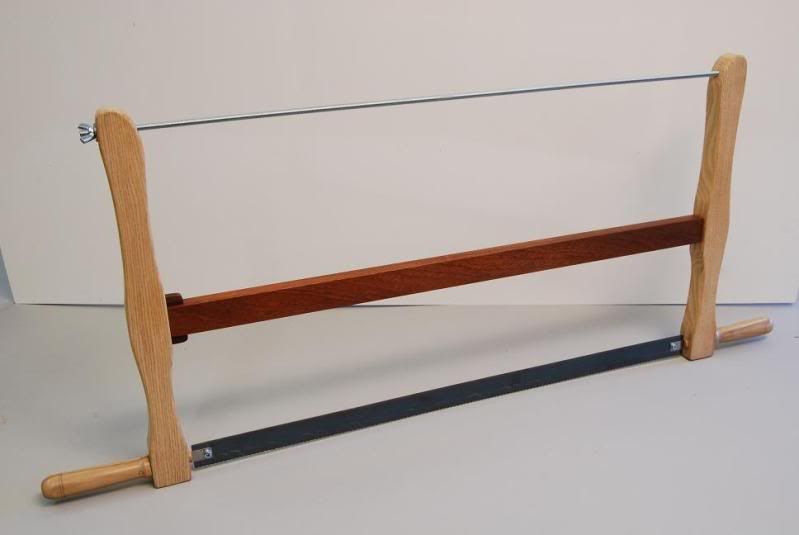Hi everyone,
I have read this forum for years, but this is the first time I feel I might be able to contribute something useful.
I am just a hobbyist woodworker and only have been at it for a few years, but at least I own a continental bowsaw. Unfortunately, in a reversal of the experience of all the posters before me, I have never used an English backsaw, so I cannot compare the two types.
I don't think there is any reason to believe that bowsaws are better than backsaws but there are some points which I personally find nice:
- You can exchange the saw blades so you could get by with just one frame and several blades for different cuts if you were short on money.
- The blade can be (and usually is) slightly tilted with respect to the frame, which makes it possible to look down on the blade and sight along your cut line. Also, if the piece you are cutting off is not too wide, you are not limited in the depth of the cut.
- The possibility to tilt the blade in the frame allows for a convenient method to do long rip cuts on the workbench which I have heard can be difficult with other hand saws. Basically, the blade is turned 90 degrees with respect to the frame, which is then gripped on the top. I cannot post links yet, but you can google "Frank Klausz bow saw basics". The last picture in the first link (from popularwoodworking) shows the technique in action.
I think the biggest challenge in learning to handle a bow saw might be getting used to the asymmetrical weight distribution (due to the tilted saw blade) and the high balance point. However, there is even a small benefit in this, because you are very sensitive to the saw tipping over and thus straying from the cut line.
In the end, choosing a type of saw will just be a matter of personal preference but I think you should give bowsaws a try.
I hope this helps a bit.
Cheers,
Lasse







